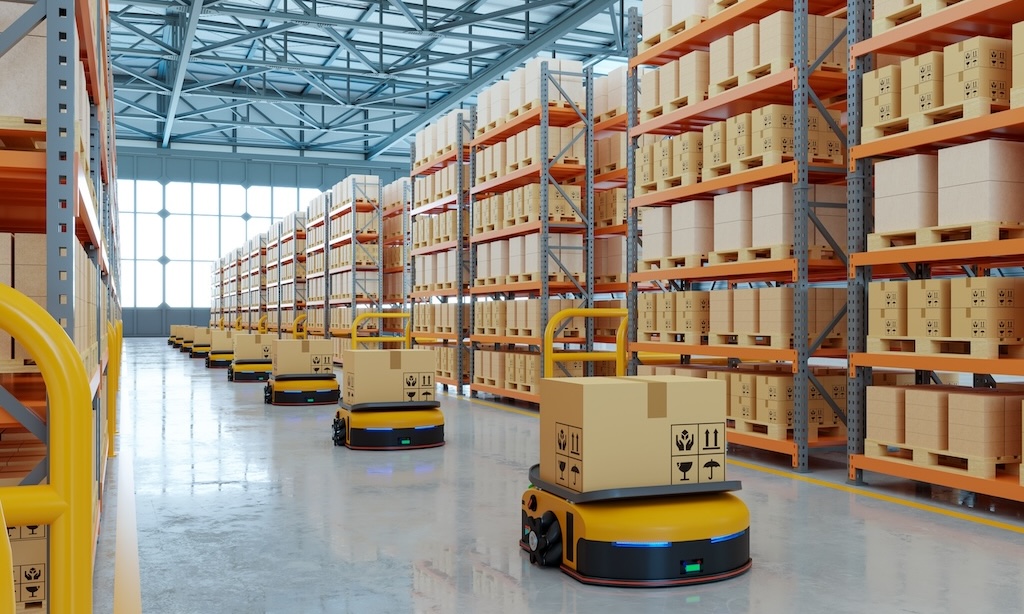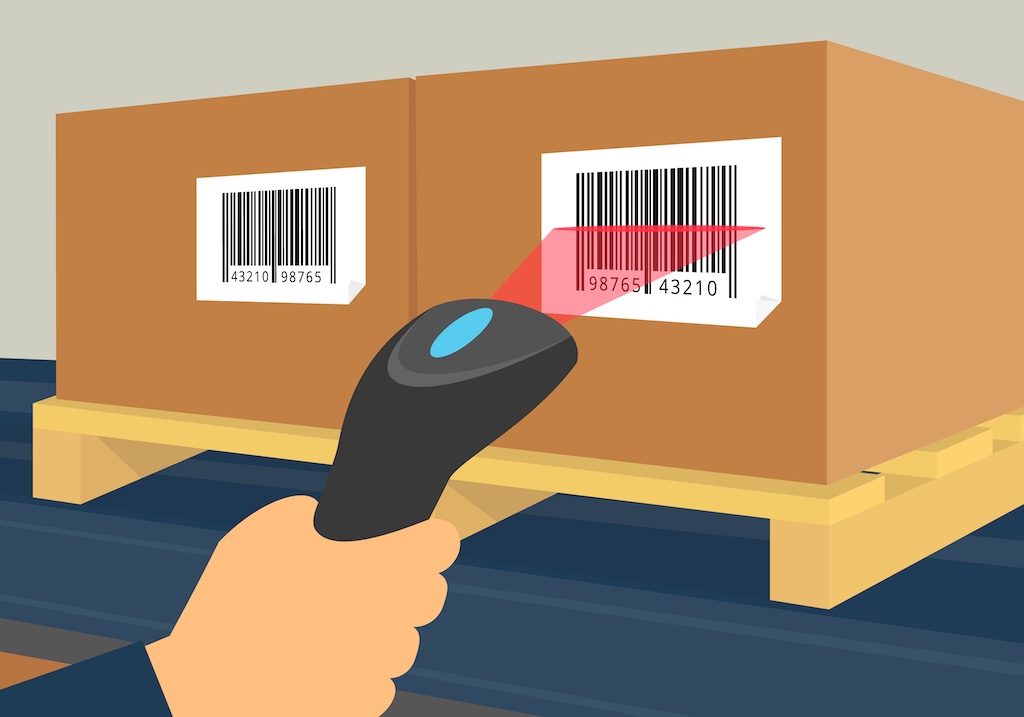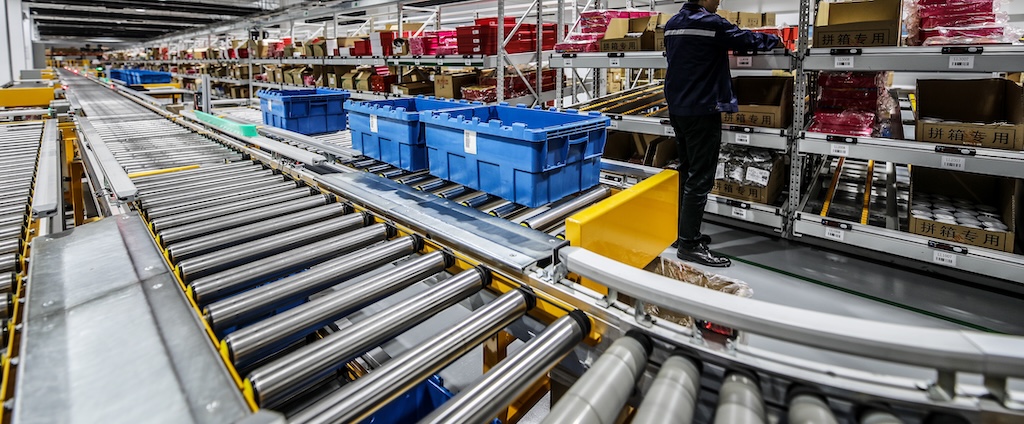The convenience distribution industry is evolving fast, driven by rising demand, labor shortages, and the need for faster, more accurate deliveries. To keep up, many distributors are turning to automation to improve efficiency while controlling costs.
Once reserved for massive distribution centers, automation is now within reach for warehouses of all sizes. Advances in technology allow convenience distributors to streamline operations, reduce errors, and enhance order accuracy without the need for a major infrastructure overhaul.
But which automation solutions make the most sense for your warehouse? Let’s explore the most practical warehouse automation technologies that convenience distributors can adopt today.
Why More Warehouses Are Turning to Automation
Rising Labor Costs & Workforce Challenges
Warehouse labor shortages and high turnover rates make it difficult to maintain consistent productivity. Automation helps reduce reliance on manual labor for repetitive tasks, improving efficiency without increasing payroll costs.
Growing Order Volumes & Complexity
Convenience distributors handle a high volume of small, fast-moving items—from snacks and beverages to tobacco and health supplies. Manual picking and packing can quickly become a bottleneck, slowing down fulfillment.
The Need for Greater Speed & Accuracy
Order mistakes can lead to frustrated customers, retailer compliance issues, and lost sales. Automation reduces errors and standardizes processes, ensuring accurate picking, inventory tracking, and labeling.
Automation: A Scalable Solution for Every Warehouse
Automation doesn’t require a massive upfront investment or a complete operational overhaul. Even small upgrades—like barcode scanning, hands-free wrist-mounted picking, and automated labeling—can deliver meaningful improvements without disrupting workflows.
Let’s explore some of the most practical automation solutions that convenience distributors can use to optimize warehouse operations.
Practical Warehouse Automation Technologies for Convenience Distributors

Automation doesn’t have to mean a complete warehouse overhaul. Many scalable, cost-effective solutions help distributors improve efficiency, reduce errors, and speed up fulfillment. Below are some of the most practical automation tools for convenience warehouses handling fast-moving consumer goods.
Hands-Free Wrist-Mounted Picking
- Best for: Warehouses needing fast, accurate, and ergonomic picking solutions.
- How it works: Wrist-mounted picking devices provide real-time, hands-free order guidance for warehouse workers. A small screen on the device displays picking instructions, directing workers to the correct location and quantity. Some systems include an integrated scanner, allowing employees to scan barcodes with a simple wrist motion to confirm selections—eliminating the need to hold a handheld scanner or paperwork.
- Benefits: Faster picking speeds, improved accuracy, reduced fatigue.
- Why it’s useful for convenience distributors: Convenience distributors handle high-SKU turnover and frequent order replenishment, making speed and accuracy critical. Hands-free wrist-mounted picking allows workers to move quickly while maintaining high accuracy rates, reducing errors in small-item, high-volume fulfillment environments.
Voice-Directed Picking (VDP) & Mobile Barcode Scanners
- Best for: Warehouses needing hands-free picking and scanning accuracy.
- How it works: Workers receive picking instructions through a wireless headset, allowing them to focus on retrieving products without looking at a handheld screen. Barcode scanners help verify correct items.
- Benefits: Improves speed and accuracy, keeps workers’ hands free, and integrates well with existing workflows.
- Why it’s useful for convenience distributors: Many convenience products—like snacks, beverages, and health items—are similar in packaging, leading to high error rates in manual picking. Voice-directed systems help reduce mistakes while improving productivity.
Conveyor & Sortation Systems
- Best for: Medium to large distributors handling thousands of daily orders.
- How it works: Conveyor systems move goods through different processing zones, while automated sortation directs items to the correct locations based on barcodes or RFID tags.
- Benefits: Reduces manual handling, minimizes bottlenecks, and increases throughput.
- Why it’s useful for convenience distributors: Many distributors sort and stage orders for multiple retail customers. Automated sortation ensures the right products go to the right destination efficiently.
Automated Pallet Wrappers & Labeling Machines
- Best for: Warehouses shipping large volumes of palletized goods.
- How it works: Automated machines wrap and secure pallets or apply shipping labels without requiring manual labor.
- Benefits: Increases consistency, reduces labor costs, and speeds up the shipping process.
- Why it’s useful for convenience distributors: Ensures retail compliance with major grocery and convenience store chains while freeing up workers for higher-value tasks.
Autonomous Mobile Robots (AMRs) – A Future Consideration

- Best for: Larger operations looking to automate material movement.
- How it works: AMRs use sensors and AI to navigate the warehouse autonomously, transporting inventory between storage zones and picking stations.
- Benefits: Reduces the need for manual cart movement, increases efficiency, and helps mitigate labor shortages.
- Why it’s useful for convenience distributors: While not yet common in smaller operations, AMRs may become a viable option for large convenience distributors as costs decrease.
How ERP Systems Support Automation Readiness
Even if a warehouse isn’t ready to fully implement automation, having a strong operational foundation is critical for future scalability. This is where an Enterprise Resource Planning (ERP) system—like DAC ERP from CDR Software—plays a key role. While ERP systems don’t automate warehouse tasks directly, they streamline operations, optimize workflows, and ensure the right infrastructure is in place to support future automation investments.
Improving Inventory Accuracy and Visibility
Automation works best when inventory data is precise and up to date. An ERP system ensures that:
- Inventory counts are accurate, reducing the risk of mispicks.
- Stock levels are tracked in real time, preventing overstocking or stockouts.
- Automated solutions, like wrist-mounted picking or barcode scanning, integrate seamlessly with inventory data.
Optimizing Warehouse Layout and Workflows
Before investing in automation, distributors need to identify operational inefficiencies and ensure their warehouse layout supports streamlined picking and packing. ERP systems help by:
- Analyzing order patterns to optimize storage locations for fast-moving SKUs.
- Providing insights into bottlenecks that automation could help resolve.
- Enhancing order routing, ensuring that workers take the most efficient paths through the warehouse.
Enhancing Order Tracking and Analytics
For automation to work effectively, it needs reliable, real-time data. This is where an ERP system plays a critical role:
- Accurate order tracking, so automation tools (like sortation systems) can process orders without errors.
- Historical performance insights, helping businesses decide where automation can have the most impact.
- Labor efficiency reports, identifying repetitive tasks that could benefit from automation.
Laying the Groundwork for Future Automation
For many convenience distributors, automation is an incremental process—starting with barcode scanning or hands-free wrist-mounted picking before moving to conveyor systems or robotics. An ERP system like DAC ERP ensures that as automation tools are added, they fit into a well-structured, data-driven warehouse operation.
Is Automation Right for Your Warehouse?

Automation isn’t a one-size-fits-all solution. Some warehouses may benefit from simple upgrades like barcode scanning, while others may be ready for more advanced solutions like conveyor sortation. The key is to assess your operational needs, budget, and long-term goals before making an investment.
Small to Mid-Sized Warehouses: Start with Cost-Effective Automation
For many convenience distributors operating modest or medium-sized warehouses, the best approach is to start with automation that offers the biggest impact with minimal disruption:
✅ Mobile barcode scanners – Reduce picking errors and speed up inventory management.
✅ Wrist-mounted picking systems – Increases speed and accuracy while keeping workers’ hands free.
✅ Voice-directed picking – Keeps hands free while guiding workers to the correct items efficiently.
✅ Automated labeling and pallet wrapping – Speeds up outbound shipments and ensures compliance with retailer standards.
Larger Convenience Distributors: Consider More Advanced Automation
If your warehouse handles thousands of orders daily or has high-volume sorting needs, you may benefit from more advanced systems:
✅ Conveyor and sortation systems – Reduce manual handling and increase throughput.
✅ Autonomous Mobile Robots (AMRs) – Assist in material movement, reducing labor dependency.
✅ Automated storage and retrieval systems (AS/RS) – Improve space utilization and picking efficiency.
Key Questions to Ask Before Investing in Automation
Before implementing any automation technology, consider:
- Where are the biggest inefficiencies in your warehouse? (e.g., picking errors, slow fulfillment, high labor costs)
- What is your order volume and error rate? (Frequent mispicks or delays may signal a need for automation.)
- How much labor do repetitive tasks require? (If workers spend excessive time on routine tasks, automation can improve efficiency.)
- What’s your budget for automation? (Some solutions offer quick ROI, while others require long-term investment.)
Automation is a Journey, Not an All-or-Nothing Decision
Automation doesn’t have to be all or nothing. Even small, incremental upgrades—like barcode scanning or wrist-mounted picking—can lead to significant operational improvements. Even if full automation isn’t in the near future, taking steps toward automation readiness—such as implementing an ERP system and optimizing workflows—can set the stage for future improvements.
Conclusion
Automation is becoming essential in convenience distribution, helping warehouses improve accuracy, reduce labor strain, and meet growing customer expectations. While full automation isn’t always feasible, small, scalable upgrades—like barcode scanning, wrist-mounted picking systems, and automated labeling—can make a significant impact without disrupting daily operations.
Even if your warehouse isn’t ready for advanced automation, having the right ERP system ensures you’re prepared for future enhancements. With DAC ERP, convenience distributors can optimize inventory management, streamline workflows, and build a strong foundation for automation when the time is right.
Looking to improve efficiency in your warehouse? Learn how DAC ERP helps convenience distributors optimize operations today—while preparing for automation tomorrow. Contact us today!
FAQs
What types of automation are most cost-effective for small and mid-sized convenience distributors?
For smaller warehouses, the best cost-effective automation options include barcode scanning, wrist-mounted picking systems, voice-directed picking, and automated pallet wrapping. These solutions improve efficiency and accuracy without requiring a large capital investment.
Does automation replace warehouse workers?
Not necessarily. Most automation solutions are designed to support workers, not replace them. Technologies like wrist-mounted picking and voice-directed picking help employees work faster and with fewer errors, while conveyors and sortation systems reduce the need for manual handling of heavy loads.
How do I know if my warehouse is ready for automation?
Your warehouse might be ready for automation if you experience frequent order errors, labor shortages, rising operational costs, or inefficient picking and packing processes. Conducting a workflow analysis and reviewing performance metrics through an ERP system can help determine the best automation solutions for your needs.
How does an ERP system help with warehouse automation?
An ERP system centralizes inventory and order data, ensuring that any automation solutions you implement—such as barcode scanning or sortation systems—are running on accurate, real-time information. Even if a warehouse isn’t ready for automation today, an ERP helps optimize workflows and prepare for future automation investments.
What is the ROI of warehouse automation?
The return on investment (ROI) depends on the type of automation and the challenges it solves. Typically, automation reduces labor costs, improves order accuracy, and speeds up fulfillment. Many companies see a return on investment within one to three years, especially for solutions that reduce costly errors and improve efficiency.
Can automation be implemented gradually?
Yes! Many convenience distributors start small, introducing barcode scanning or hands-free wrist-mounted picking first, before investing in more advanced automation like conveyors or robotics.

